Would You Like a Cup of Tea? Learn How to Tea Dye Clothing.
The other day I was a-wondering around a local thrift store looking for goodies to add to the studio wardrobe when this beautiful wedding dress caught my eye. I fell in love with the lace detail on the top and sleeves, but I wasn’t in love with the dress being pure white.
Not to worry! I knew I could tea-stain the dress and turn the gown into a lovely vintage-inspired looking dress.
Tea staining? Yup! Tea staining takes pure-white clothing and gives the item a beautiful color, and this post will explain how it’s done.
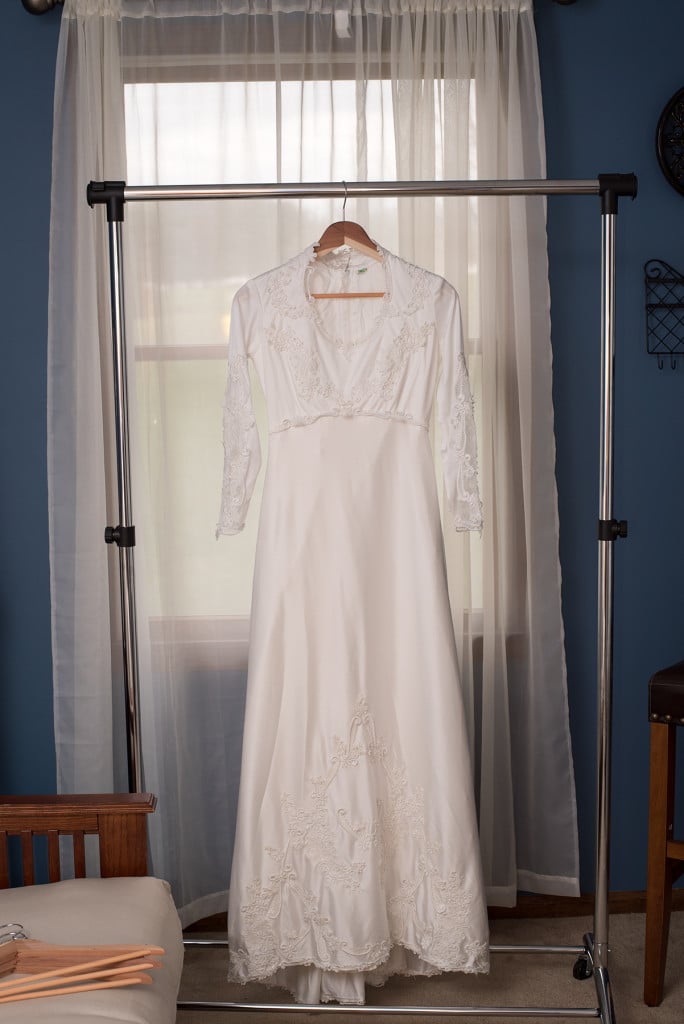
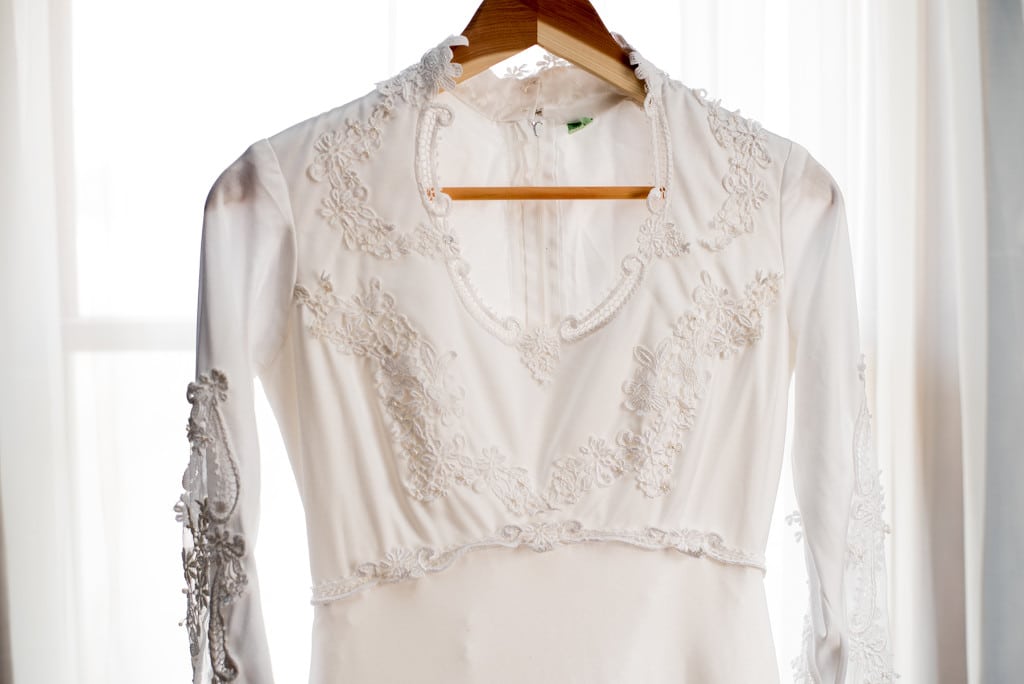
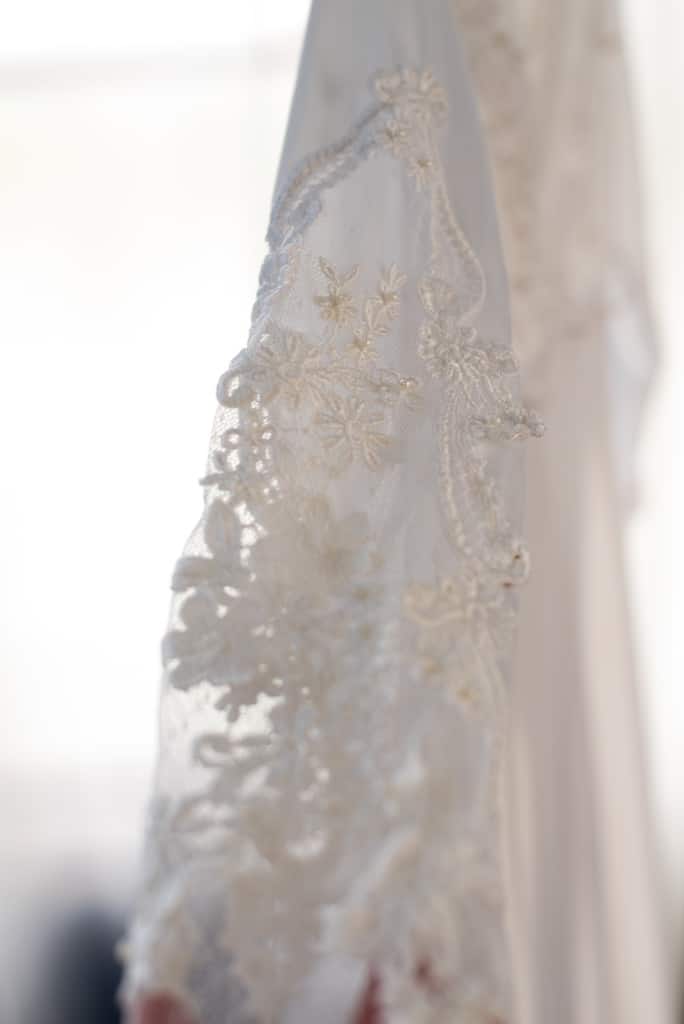
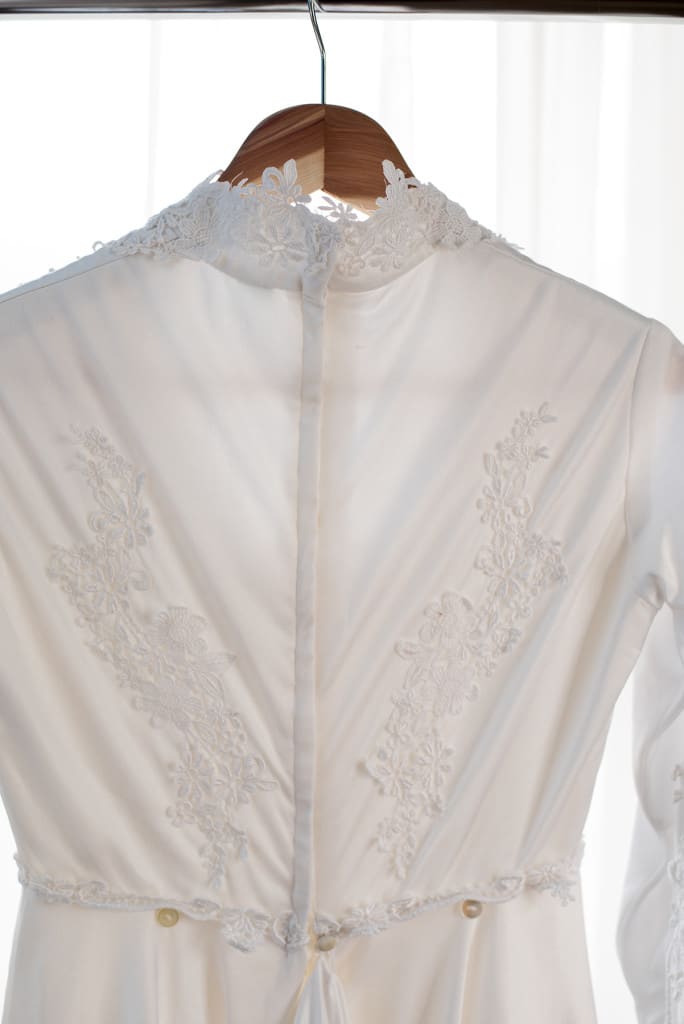
The supplies needed are very minimal—tea (I suggest black tea), a large plastic or glass container, and a tea kettle to boil water. Depending on how large the article of clothing is that you are staining, you may need to add two kettle’s worth of water to the container so the item is submerged.
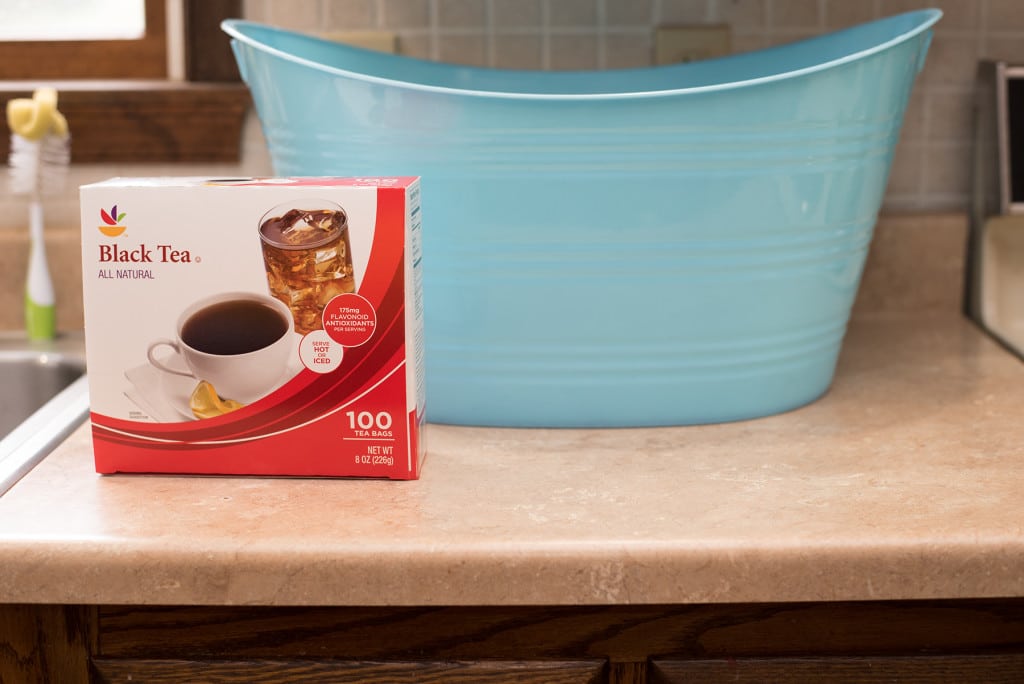
If you’re using a plastic container, put cool water in the bottom first so you aren’t pouring boiling water directly onto the plastic.
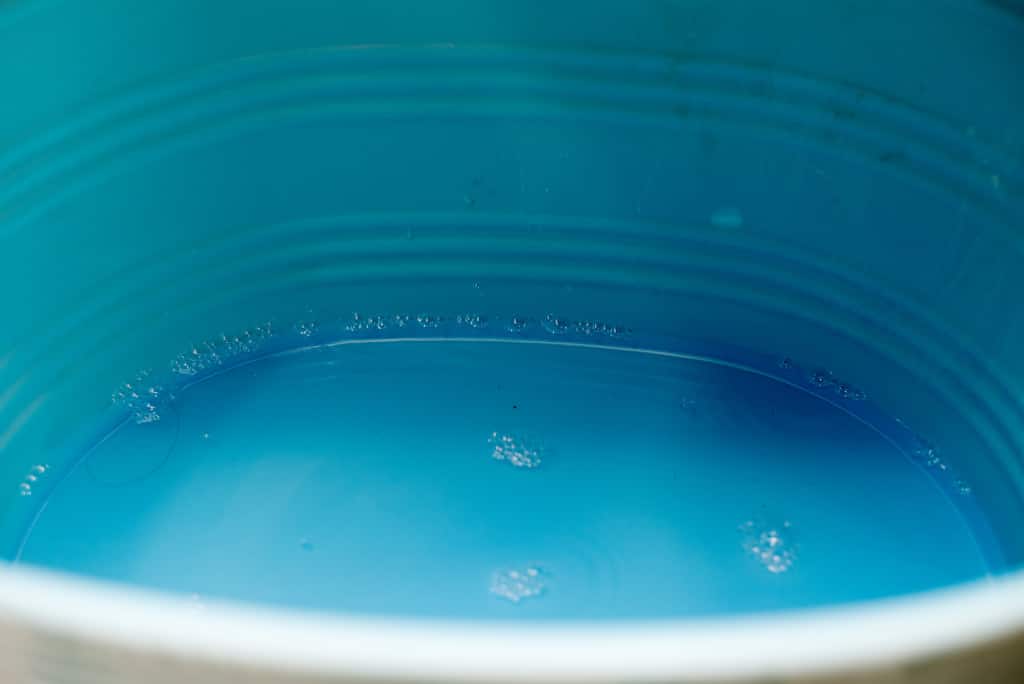
There is no formula on how many tea bags to use—rule of thumb: the more you use the darker the water. For this dress I used 12 black tea bags and let the bags seep for about five minutes after I added the boiling water. Once done, I tossed the tea bags.
CAUTION: Boiling water is hot.

Then you just work the fabric into the tea water, and it doesn’t take long for the fabric to stain—you can see in the shot below the unstained portion is on the left and the stained portion is on the right—took less than three minutes!

The next step is important: rinse the item well or you run the risk of getting dark tea stain spots on parts of the fabric not rinsed fully. In fact, I do not recommend letting the item sit to soak too long in the tea water—keep the item moving in the tea water to help avoid the item getting stained darker in some spots.
With the dress, I threw it into the washing machine on the hand-wash cycle and then draped over the sweater rack to air dry.
Now. With all of that said, keep in mind some fabrics take the stain better/darker than others, and I cannot guarantee the results. Some fabric, like nylon, may not take the stain at all, or if it does it could wash out during the rinse. But overall, once an item is stained it will not go back to pure white, so please keep that in mind.
You can use the same water to stain multiple items—once you’re done, just poor the water down the sink. Be sure you rinse/wipe out the container you used to avoid staining.
So what does the final results look like? You’ll have to wait to see the images of the woman from the mother/daughter contemporary glamour session I shot on the 30th.
Post your questions below in the comments.
Until next time,
Shannon
What did you use to move the dress around in the boiling water? I had always heard a wooden spoon was best to use. Did you use one?
Great question! I did use a wooden spoon, but you could use a plastic one if that’s what you have on hand. Just don’t dip your hands in the boiling water!
Lovely detail on the dress…looks like satin when all is said and done. What a unique way to convert the color of it. I think the darker color brings out the lace detail as well…good job. You’re so creative. Good vision for this dress.
Thank you!